RODE NTH-100 Review and Measurements

Introduction
Rode is a brand that anyone whose spent a moderate amount of time doing video production will recognize for their very popular microphones, and I've personally used many of them in the past as well. So of course when they came out with an over-ear headphone, I've been curious to give them a try. While my focus is more squarely aimed at the audiophile landscape, it's also important to recognize that this new RODE NTH-100 headphone is targeted at content creators, YouTubers, or anyone with a video production use case in mind. So the question worth asking - at least in my mind - is whether or not the RODE NTH-100 dethrones my typical recommendation of the AKG K371 for this purpose, especially given that the NTH-100 comes in at the same $149 price tag.
Accessories
The NTH-100 unboxing experience was about as no-nonsense as it gets. You get the headphones, a very long single entry cable (terminated in 3.5mm), a 6.35mm adapter, and a number of colored plastic rings that go around the cable connector. You also get a little rubber stopper that goes onto the other side of the headphones where the cable isn't plugged in. Lastly, you also get a cloth baggy.
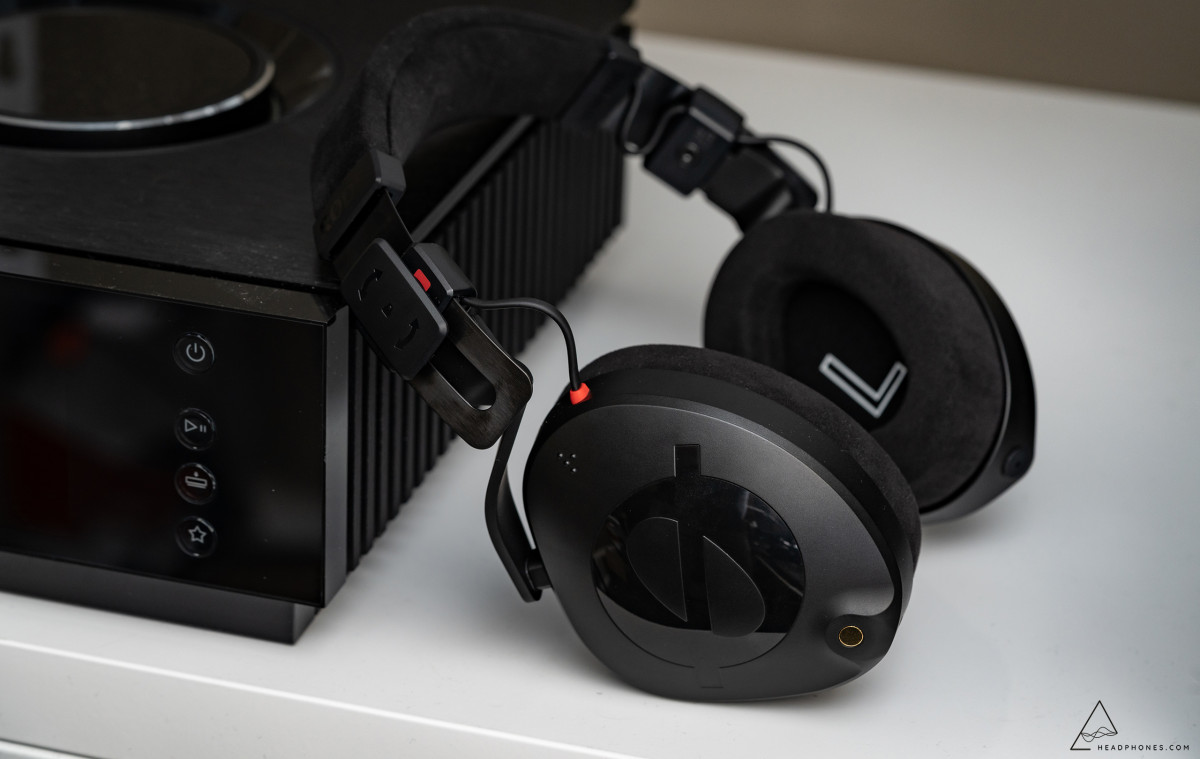
Build, Comfort & Aesthetics
The RODE NTH-100 feels exceptionally well-built. The AKG K371 feels like a flimsy, rickety toy by comparison. Everything from the cup housing to the yoke structure to the headband is solid. Speaking of the yoke structure, it's got quite a unique design, with a single arm piece that's folded backwards on itself before angling upwards to the headband, at which point you get arm extension that's fixed in place by a locking clasp system. I expect this headphone to last a long time and make it through long-term wear reasonably well.
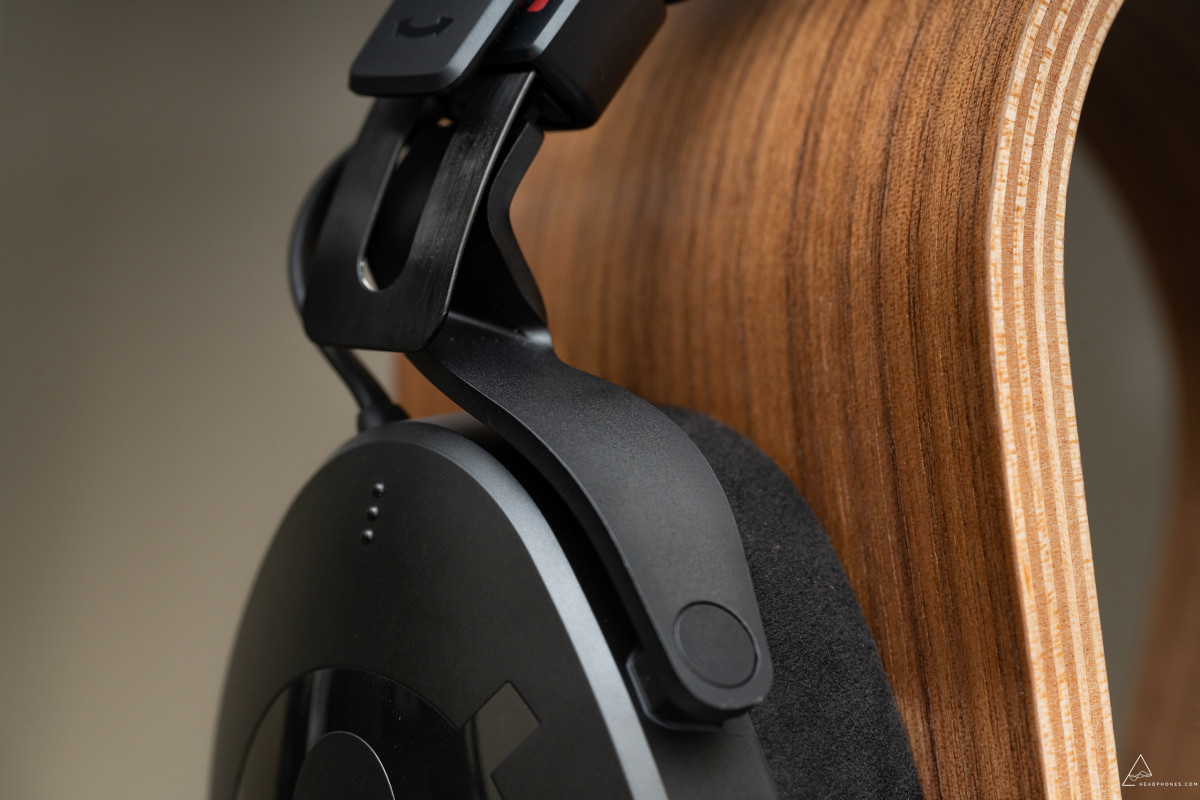
Comfort is also generally good. There's a bit of clamp pressure, but it's also a very lightweight design, without any hot spots or pain points up top. Here's where we get to another esoteric design choice, and that's the triangular ear pads. This one I'm less keen on as even though most listeners will likely find enough room for their ears inside, my overly large elephant ears get ever so slightly impacted by the sides of the pads a bit. Still, the triangle shape is closer to that of an actual ear than a typically circular pad design, so that's good.
As far as looks goes, it's all black, with a generally no nonsense extra regular appeal, and I absolutely love it. In an era where headphone industrial designs often go for broke with aesthetic flare, the RODE NTH-100 has elegance in its simplicity that's refreshing to see. More of this please.
For isolation, while this is a passive headphone, it does a pretty good job of isolating me from my surroundings. I find most of the isolation to be for the mid and high frequencies, while the low tones of deeper voices still have a dull drone to them. It's certainly better than that of the K371 and even some of the Beyerdynamic headphones though, and a lot better than my go-to closed-backs like the Audeze LCD-XC.
Sound: Objective
The following is how the RODE NTH-100 measures on the GRAS 43AG with anthropometric pinna relative to the combined version of the Harman preference target (2013 bass, 2018 mids and treble). This is a smoothed reference point that's suitable for most listeners looking for an even spectral balance from their headphones.
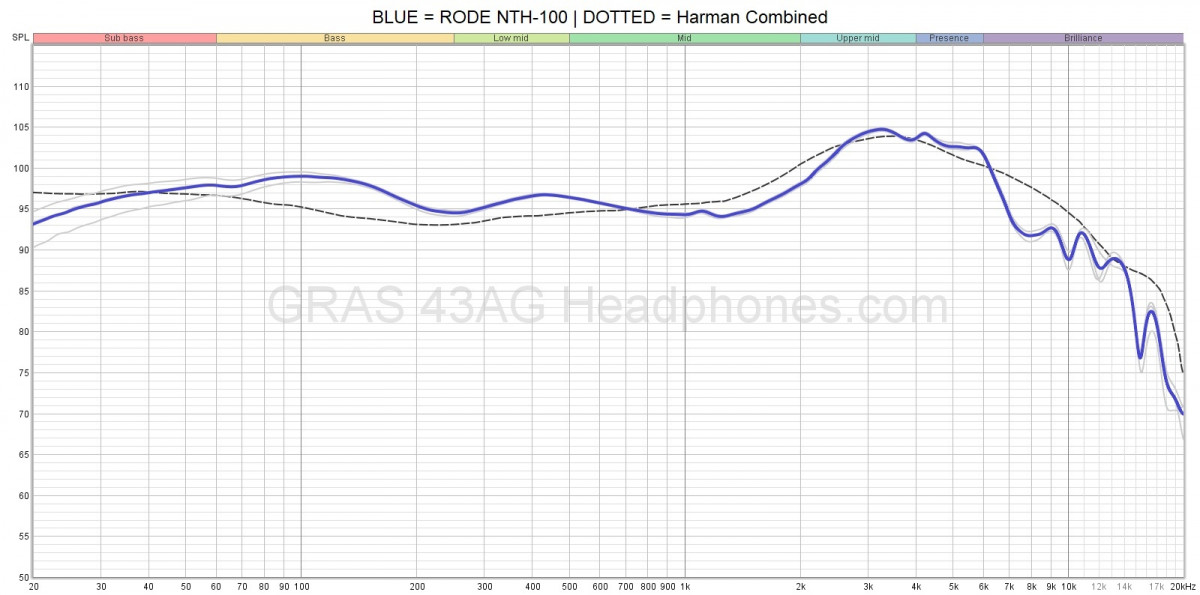
How do you read this? The dotted black line is the target (the reference point), and the colored line are how the headphones in question measure. Effectively, this shows the headphone’s frequency response in relation to a known reference point. It’s important to note that because the target is highly smoothed, there are places where deviation is required (like at around 9khz for example).
The RODE NTH-100 has a generally decent tonal balance that's focused more towards the bass and lower mids. You can see it's decently close to the reference point here, which is great for a more budget closed-back headphone.
With that said, in some ways it measures better than it sounds. That's because there's quite a lot of midbass and lower midrange masking going on that obscures the rest of the midrange presence around 1khz, and this problem is exacerbated by noticeably rolled off treble. In particular, the slight elevation around 400hz is made more noticeable as a result of the slight dip between 1-2khz. It looks subtle, but this causes a kind of thickness and muddiness to the sound that detracts from clarity.
The bass is also what I'd describe as more boom than thump, even though there's a bit of thump there as well. This can work for certain genres like classic rock and metal, but for music that makes use of the full frequency range down low, the sub-bass information tends to get lost a bit, as does the rest of the clarity in the midrange.
Once again, what makes all of this worse is the treble roll-off. I think on its own this kind of treble would be more in line with a description of "pleasantly relaxed", but in conjunction with the bass boost and lower midrange forwardness, the whole presentation just sounds a bit muffled and muddy. I'd be comfortable with one or the other, I think there's a case to be made for that in either circumstance, but not so much when taken together.
Now that's going to sound a bit overly critical, and maybe it is, because there's also a lot of good here as well. The upper midrange has exactly the right amount of presence and clarity, it's just a shame that it's held back a bit by the rest of the tuning. A bit of EQ to get the lower mids and bass transition in line will go a long way to exposing the clarity this headphone's tuning otherwise has.
Unfortunately because of the poor upper mid to treble balance, the NTH-100 can come across a bit shouty as well for certain recordings. Vocals in particular tend to take on a kind of 'angry' character, despite the overall warm presentation. This once again points to the importance of balance between 3-4khz and the treble region above it. As it stands, the RODE NTH-100 causes a lot of lower dominant tones to drown out their resonant harmonics in the regions above.
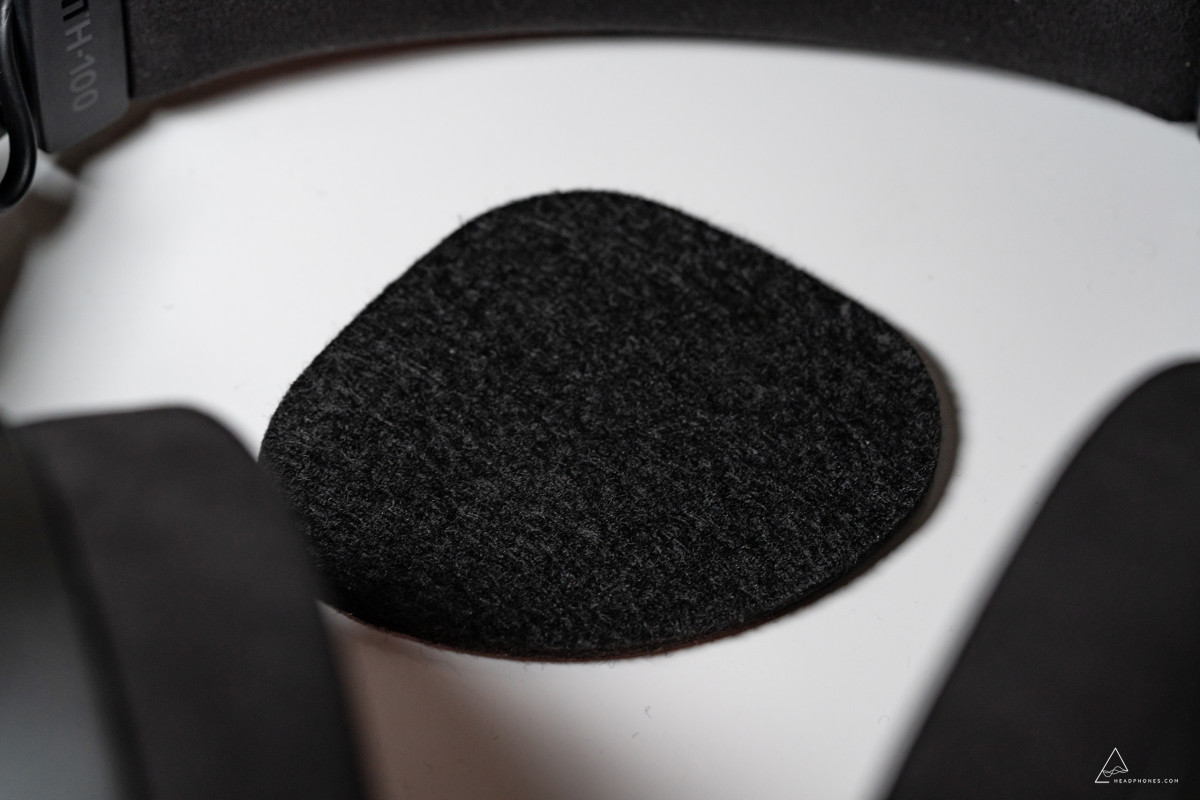
Now here's where things get very interesting with this headphone. When you remove the earpads from the cup, you'll see there's a thick piece of foam or felt that's glued in place covering the driver. This is used for driver damping, it's one of the ways manufacturers tune a headphone's sound signature. In the RODE NTH-100's case, this driver damping is significant, as the material is some of the most dense I've come across for this kind of purpose. But in general, it's not unlike what you get with some of the inserts for DCA headphones like the Aeon 2 Noire. The effect is that it curbs the treble frequencies, allowing for a warmer presentation overall.
This makes sense to do when the tonality result you have is overly aggressive in the upper frequencies, but for the NTH-100, I think this degree of driver damping is way too much, and is responsible for the thick and veiled presentation it has.
When removing the front damping material - which is likely to void your warranty, so I DO NOT RECOMMEND DOING THIS - you get a surprisingly solid result.
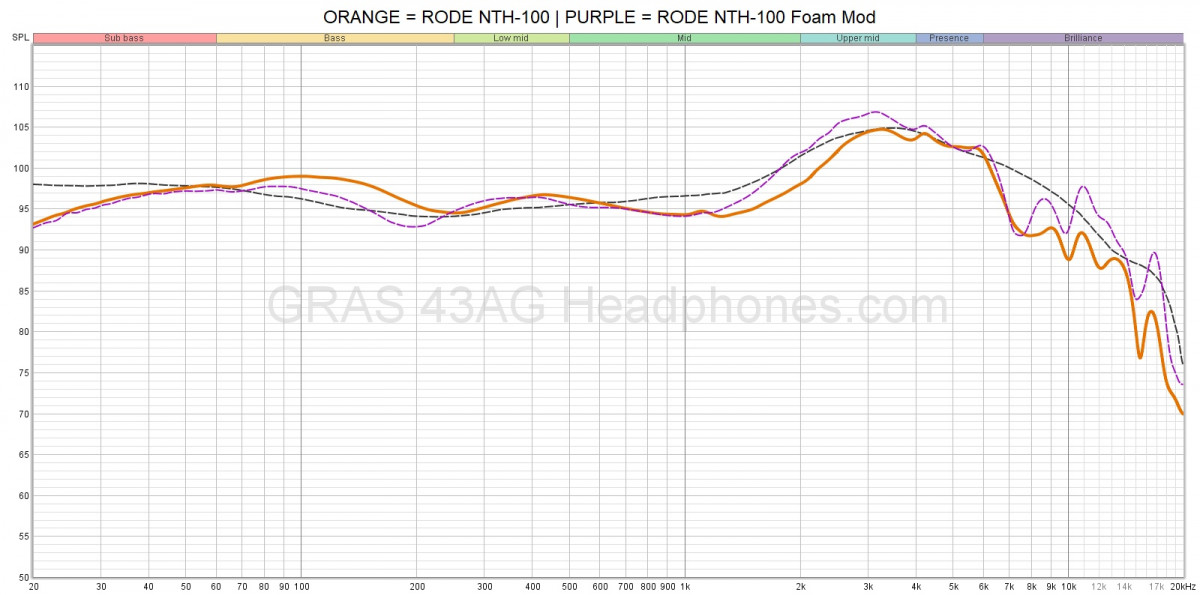
While some of the quirks and features remain (like the lower mid masking), you can see that removing the damping counter-clockwise tilts the frequency response to give a much more clear and analytic presentation. Now, the flipside to doing this is that for anyone who might be specifically looking for a warmer presentation, you're not going to get that after doing this. And, speaking personally, I do find this result to be a tad sharp between 9-11khz. But with that said, it sounds much more clear and has a better bass to treble balance - so it no longer sounds like listening through a blanket.
There's probably a more ideal middle ground, because I think anyone looking for a warmer presentation would also want the strongest part of the ear gain (around 3-4khz) to be a bit more relaxed as well. Because, the NTH-100's default tuning is kind of shouty at the same time.
But, for anyone willing to void their warranty and remove the foam material, you get a pleasantly clear sounding headphone.
Unfortunately the NTH-100 also has some strangely high and odd order harmonic distortion.
Disclaimer: while distortion of any kind might be seen as 'bad', we have to be very careful with what we attribute to this kind of nonlinearity. There are numerous studies that indicate there's no meaningful preference among listeners for lower harmonic distortion past a certain threshold.
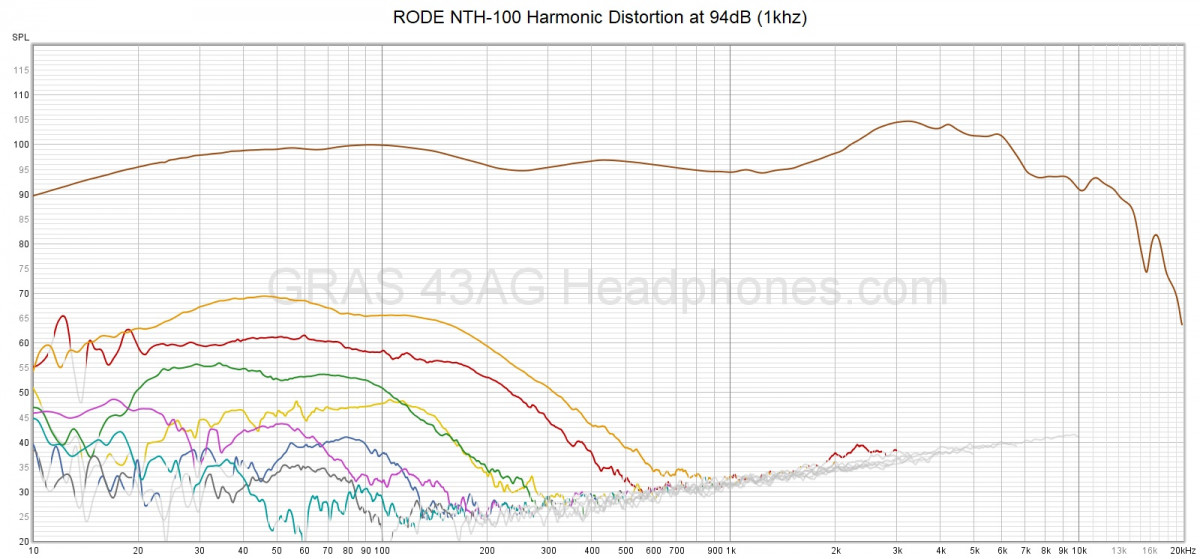
As always with harmonic distortion, the big question is at what point is this actually audible, and in fact it's far less consequential than what it might look like. We've done an entire article on why harmonic distortion isn't nearly as important as the public consciousness on this topic might make it out to be, and you can read that here.
But in this case, we see some strange behavior. You can see the third harmonic (the highest orange line) is elevated significantly over the 2nd harmonic product (red line), and even more worrying is that we see significantly elevated 5th harmonic distortion (green).
Now, ordinarily it's not worth worrying much about elevated 2nd and 3rd harmonic distortion as in most cases it's likely to be within the masking window, and certainly with music it'll be even more difficult to identify it. But I would honestly expect a better result for 3rd and 5th than what we see here, especially at 94dB (externally calibrated). It's at a level where I would start to worry a bit about audibility, especially for those listening slightly on the loud side. As always, and as a general rule, be very careful how loud you listen.
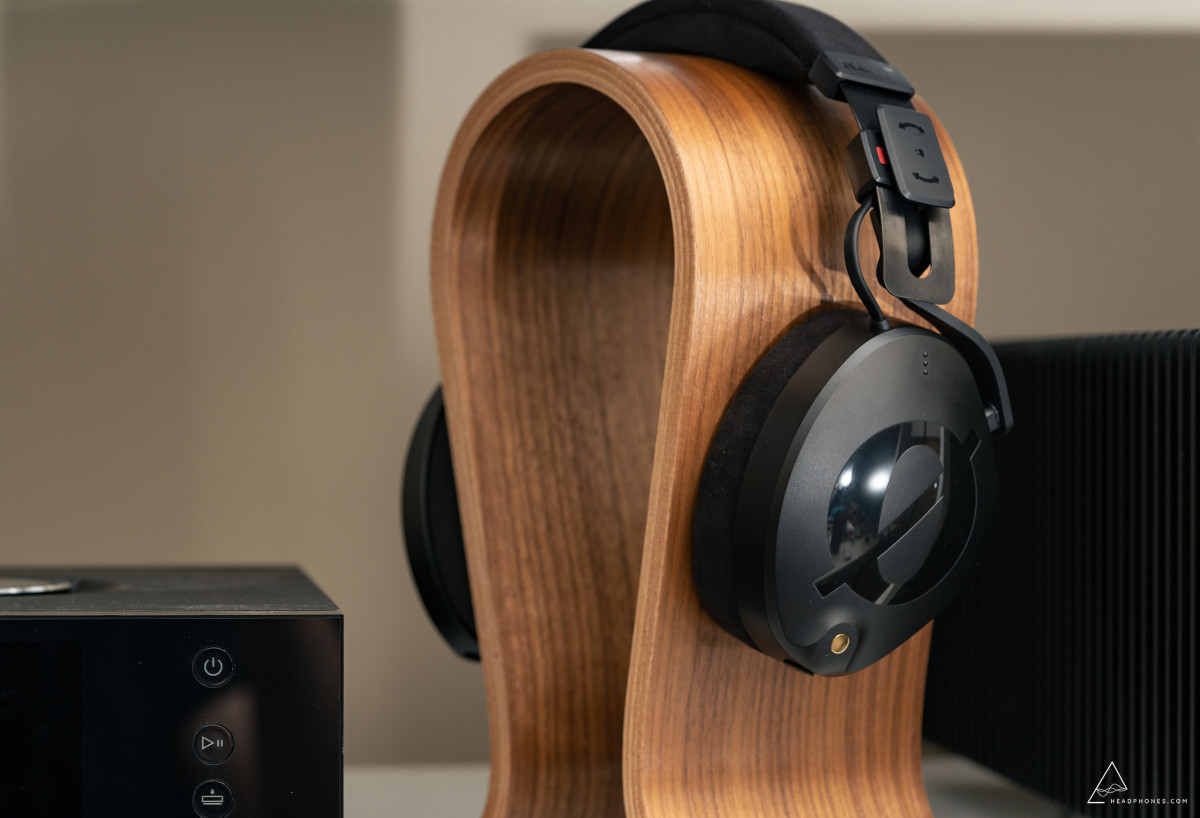
Sound: Subjective
At first I didn't notice this, but the more I listen, the more I find this headphone to be categorically dull sounding. While not on the level of the Drop Panda, it's definitely got a bit of blunting going on for the trailing ends of tones. The finer little nuances in the music get lopped off and or are otherwise harder to hear than even on the competing AKG K371, which isn't exactly all that detailed in its own right.
Interestingly, the thick foam material that's used for the driver damping causes a similar blunting effect to using the inserts on some of the DCA headphones (in addition to making it warmer, but there's more to it than just that, and this can be confirmed by doing EQ and controlling for treble level). After removing the damping, things improve slightly, but that's also aided by a more analytic presentation as well. In general, this doesn't do much to improve the ability isolate busy passages in the music though.
For soundstage and sense of space, I find the NTH-100 to be a more intimate experience. Left and right are reasonably well-defined, but it also lacks any meaningful sense of image separation that you do incidentally get quite strongly with the DCA headphones. So unfortunately there's a certain amount of smearing and haze to the NTH-100, more so than on the K371.
For macro contrast and sense of physicality, I don't think we can expect all that much at this price point. It doesn't 'slam' like some of the Fostex or Focal headphones, but it's also not hyper compressed sounding to my ear, although a friend of mine described it as having "negative dynamics" after he heard it. It's generally acceptable for the price point, but also not beating out headphones like the Beyerdynamic DT-770 that just hits harder in the bass as well.
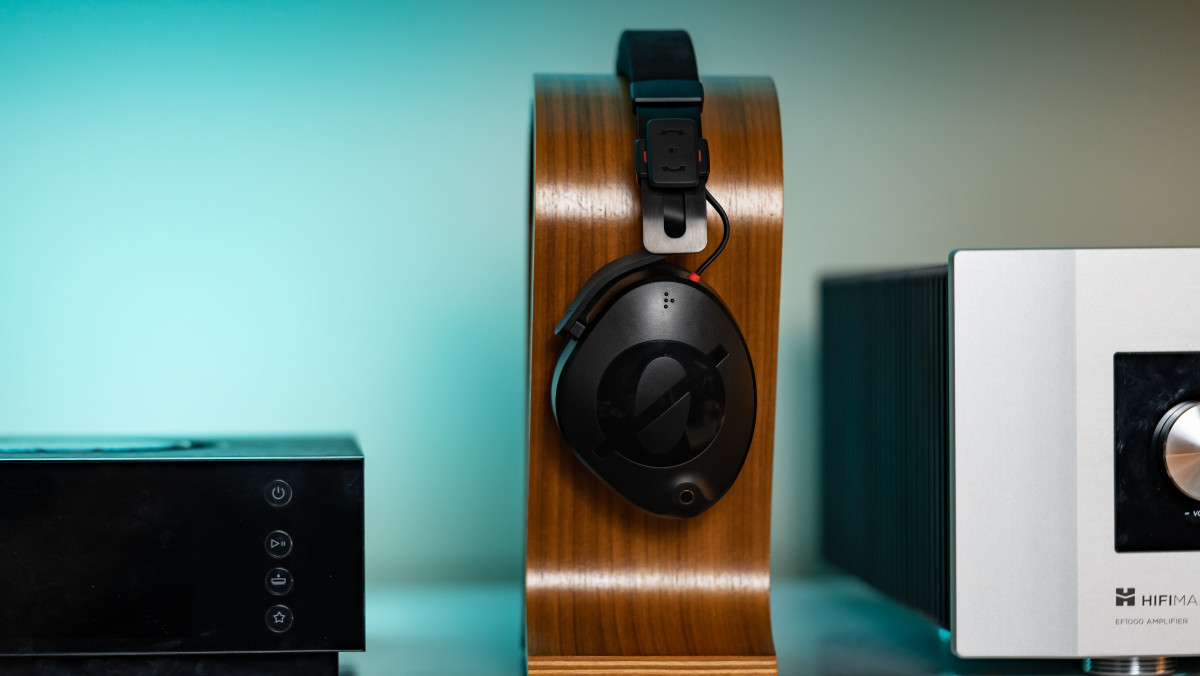
Conclusion
To my ear, the AKG K371 is still the better sounding headphone by a noticeably margin, and that's both in the 'audiophile' sense, and also for a potential pro use scenario. It just sounds more correct than the RODE does for the majority of its tuning, and that's largely due to it not having the same masking issues in the upper bass and lower mids, nor the treble roll off.
But does that mean the RODE NTH-100 is bad? I'm going to say that if you're considering buying this headphone, it should be because you value build quality, aesthetics, longevity, and general usability of a headphone to a sufficient degree. These are all totally valid reasons to choose the NTH-100, even if it doesn't dethrone the AKG K371 in terms of sound quality. Otherwise, if you just want to get the best sound for your money, I strongly recommend the K371 instead.
-Resolve
---
Discuss the RODE NTH-100 on the HEADPHONE Community Forum here.
---
